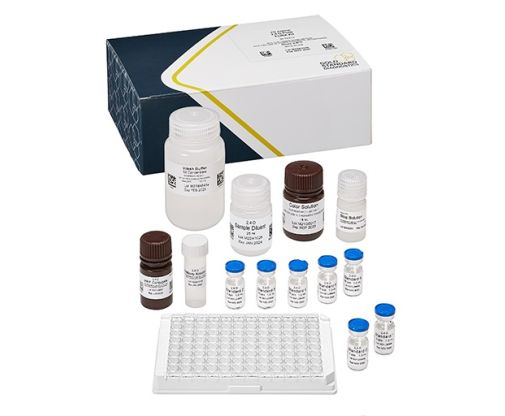The 2,4-D ELISA is an immunoassay for the quantitative and sensitive screening of 2,4-D. This test is suitable for the quantitative and/or qualitative screening of 2,4-D in water samples. Samples requiring regulatory action should be confirmed by HPLC, GC/MS, or other conventional methods.
The test is a direct competitive ELISA based on the recognition of 2,4-D by specific antibodies. 2,4-D, when present in a sample, and a 2,4-D-HRP analogue competes for the binding sites of the mouse anti-2,4-D antibodies in solution. The 2,4-D antibodies are then bound by a second antibody (goat anti-mouse) immobilized on the wells of the microtiter plate. After a washing step and addition of the substrate solution, a color signal is generated. The intensity of the blue color is inversely proportional to the concentration of 2,4-D present in the sample. The color reaction is stopped after a specified time and the color is evaluated using an ELISA reader. The concentrations of the samples are determined by interpolation using the standard curve constructed with each run.

